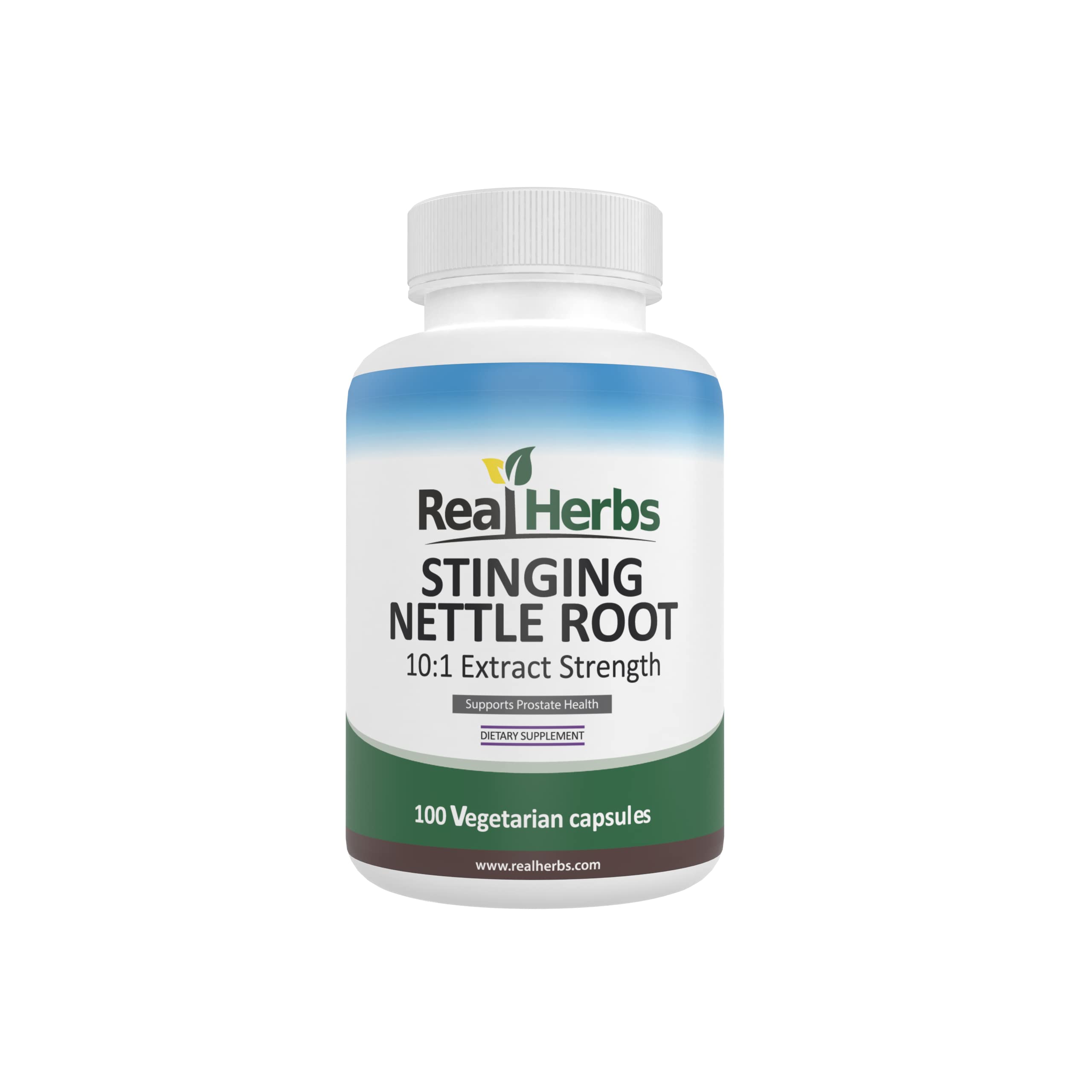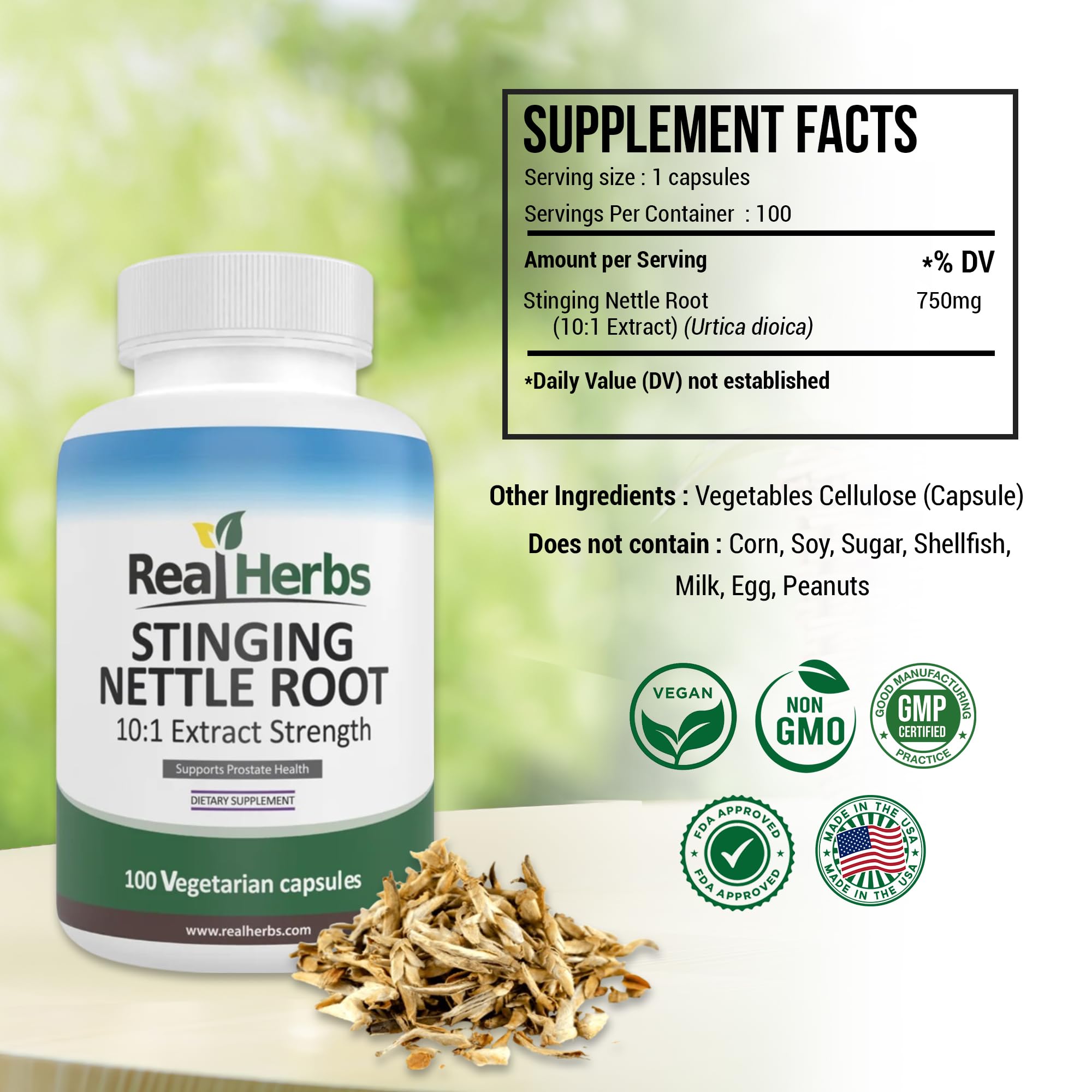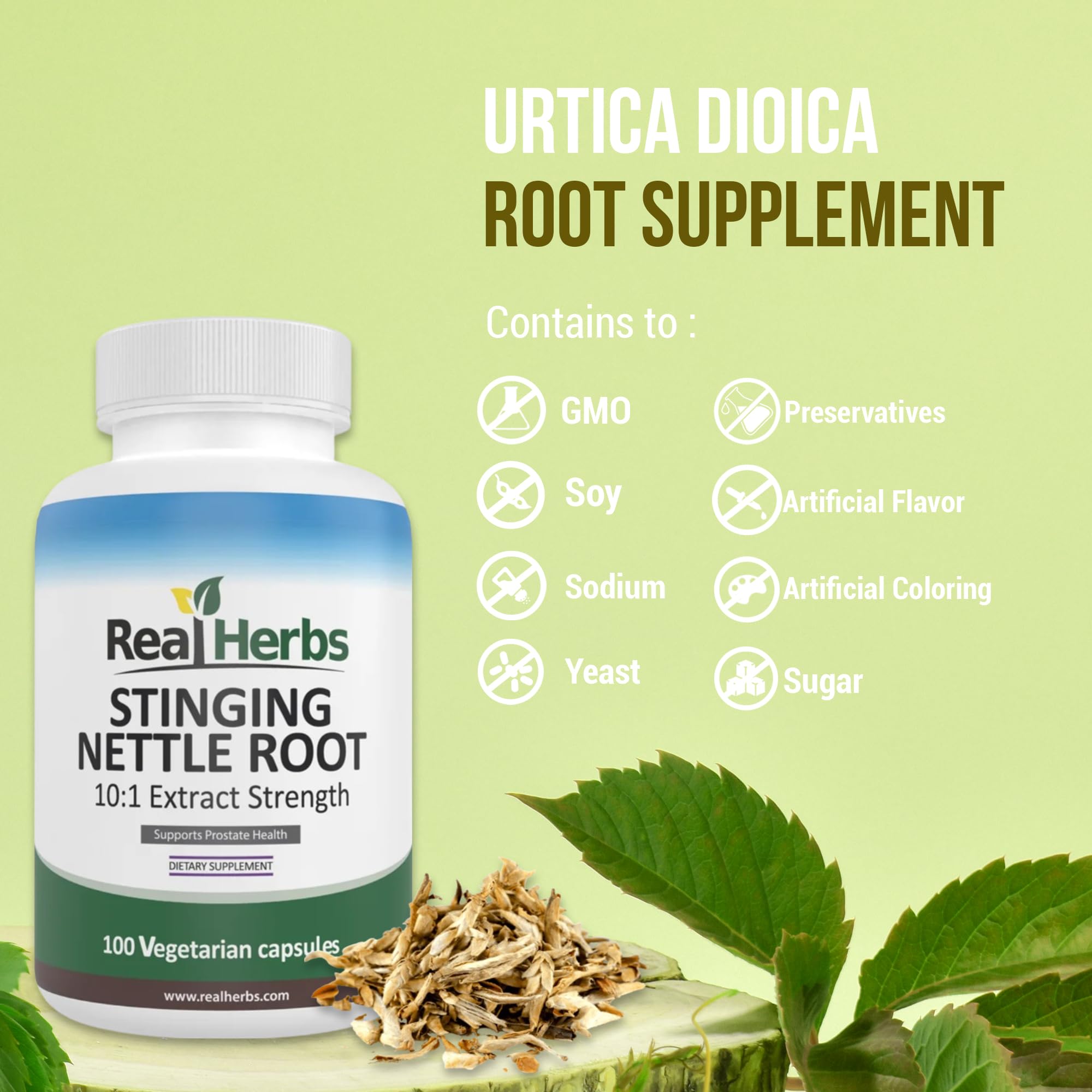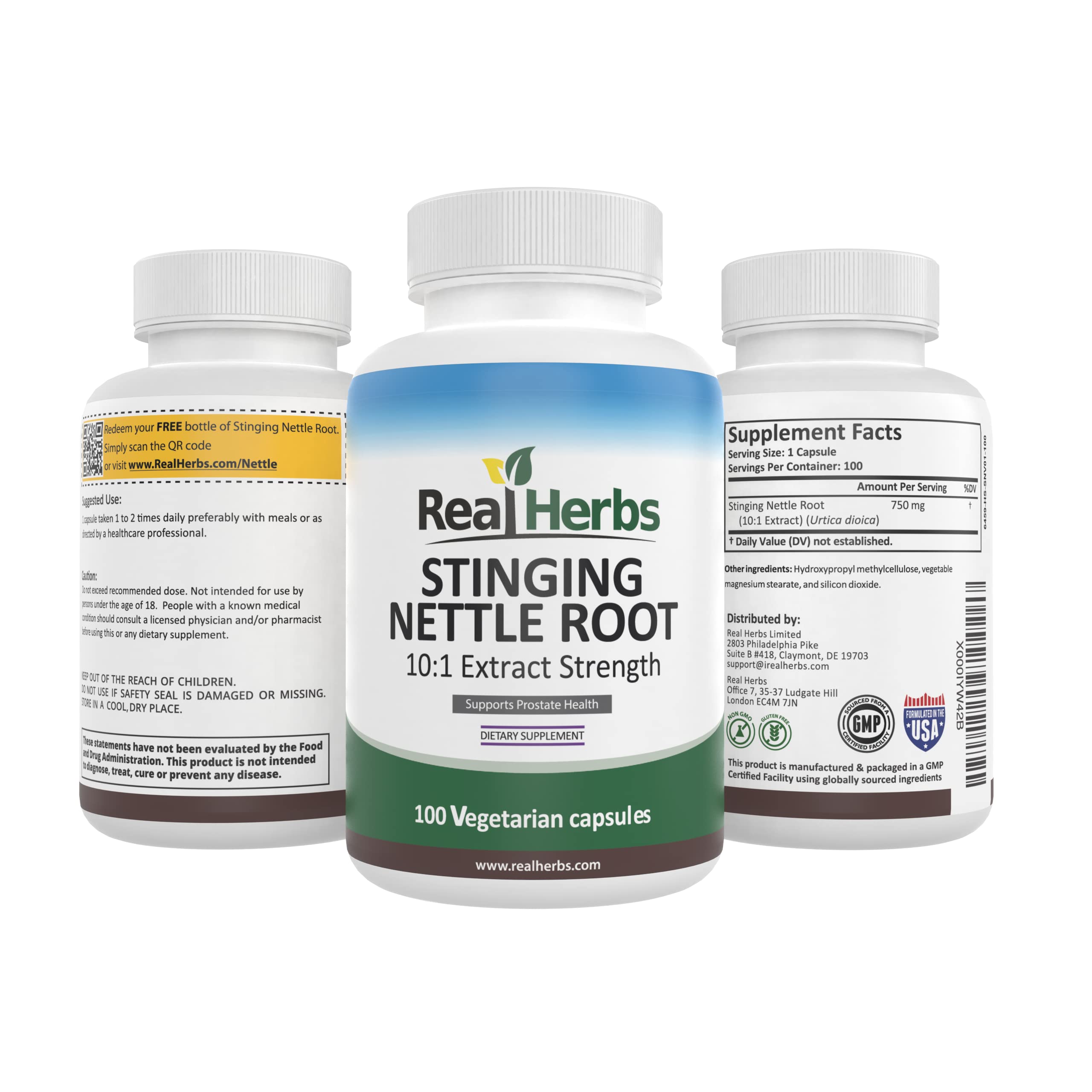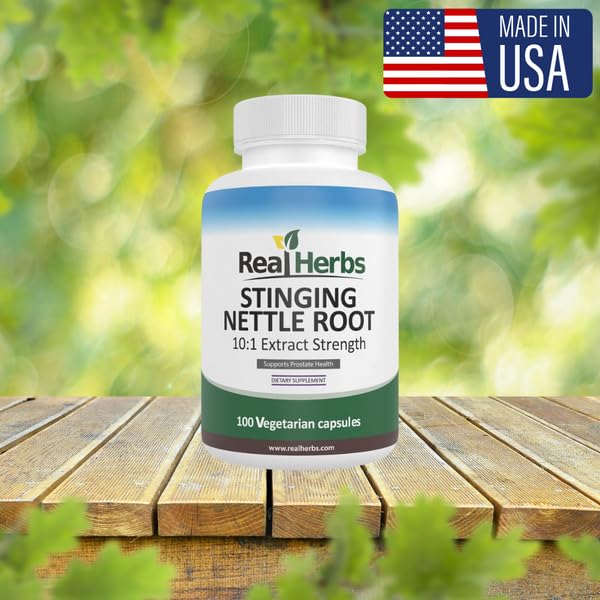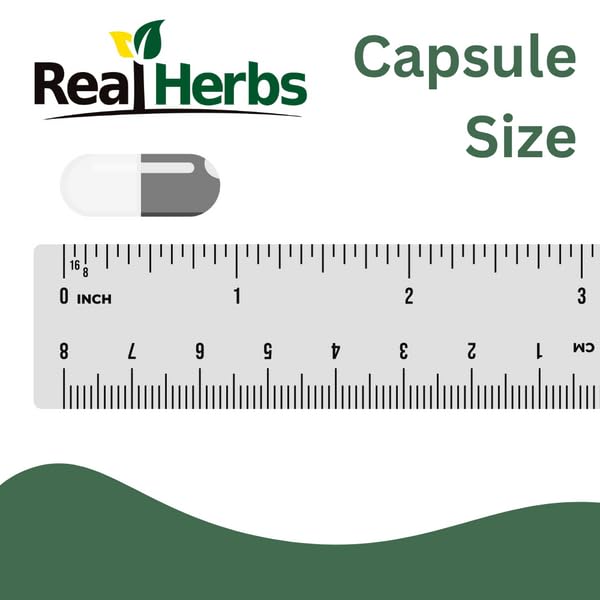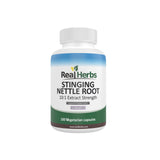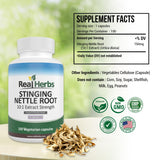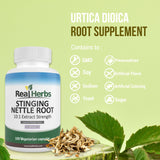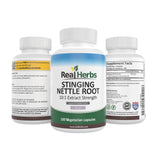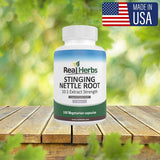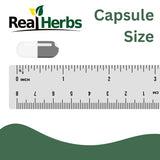Stinging Nettle Root and Traditional Indigenous Healing Practices
Stinging Nettle Root and Traditional Indigenous Healing Practices
An exploration by Jessica Johnson, Herbal Science Researcher at Real Herbs.
Centuries of Wisdom: Nettle Root in Ancient Healing Traditions
Stinging nettle (*Urtica dioica*) is a plant that transcends mere botanical status; it is a symbol of resilience and a testament to nature's healing power. While modern science increasingly validates its therapeutic properties, particularly those of the root in prostate health and hormonal balance, its use as a potent remedy stretches back millennia, deeply embedded in **Traditional Indigenous Healing Practices** across various cultures. From Europe to North America, Indigenous communities have long recognized and utilized stinging nettle root for its diverse medicinal applications, often incorporating it into holistic approaches to well-being.
This article aims to shed light on the rich history of stinging nettle root in traditional Indigenous healing. We will explore its varied uses, the underlying wisdom of these ancient practices, and how modern scientific inquiry is beginning to bridge the gap between traditional knowledge and contemporary understanding. By honoring these ancestral healing traditions, we gain a deeper appreciation for stinging nettle root's enduring legacy as a powerful natural ally.

The Enduring Legacy of Stinging Nettle in Traditional Medicine
Across continents, Indigenous peoples observed, experimented with, and passed down extensive knowledge about medicinal plants. Stinging nettle, with its widespread distribution and potent effects, naturally became a significant part of many pharmacopeias. Its "power underground"—the root system—was particularly valued for specific therapeutic applications [1].
- Holistic Approach: Traditional healing systems often view health as a balance between physical, spiritual, and environmental factors. Nettle root, like many other herbs, was used not just for isolated symptoms but as part of a broader strategy to restore harmony to the body [3].
- Ethnobotanical Knowledge: The specific ways different Indigenous groups utilized nettle root developed through generations of empirical observation and deep connection to the land. This rich ethnobotanical knowledge forms the foundation for many of its modern applications [2].
Stinging Nettle Root in Diverse Indigenous Traditions
The applications of stinging nettle root in traditional Indigenous healing practices were remarkably varied, reflecting its diverse phytochemical composition and pharmacological properties [3, 4]. These uses often align with, and sometimes precede, modern scientific discoveries about its benefits.
1. Genitourinary and Prostate Health
One of the most prominent traditional uses for nettle root, particularly in European folk medicine and subsequently adopted globally, relates to urinary issues and prostate health. This aligns strongly with its modern use for benign prostatic hyperplasia (BPH) [1, 2, 7].
- Traditional Use: Employed to alleviate urinary difficulties, such as frequent urination or difficulty in urination, often associated with an enlarged prostate.
- Scientific Connection: Modern research confirms nettle root's efficacy in addressing BPH symptoms, by influencing prostate cell growth and hormonal balance [7].
2. Anti-inflammatory and Pain Relief
The anti-inflammatory properties of nettle were well-recognized in traditional practices, both internally and topically.
- Traditional Use: Used for conditions involving inflammation, such as rheumatic pain, joint discomfort, and arthritis. Some Indigenous practices involved topical application of the leaves (urtication) to stimulate blood flow and reduce pain, though the root was more typically used for internal anti-inflammatory effects [5].
- Scientific Connection: Studies have shown that lipophilic extracts from stinging nettle root possess potent anti-inflammatory activity [5], validating this traditional application.
3. Treating Fevers and Infections
Nettle root was also utilized for its antipyretic (fever-reducing) and anti-infectious properties.
- Traditional Use: Employed in Indigenous remedies for fevers and as an aid against various infections [2, 6]. Preparations often involved root-based formulations.
- Scientific Connection: Research has assessed the evidence for the antibacterial activity of stinging nettle extracts, providing some scientific basis for its traditional use in treating infections [6].
4. Wound Healing and Skin Conditions
Topical applications of nettle preparations, sometimes from the root, were part of traditional wound care.
- Traditional Use: Used in poultices or washes for wounds, skin irritations, and to support skin healing [8].
- Scientific Connection: Studies exploring the protective effect of *Urtica dioica* extract against oxidative stress in human skin fibroblasts offer insights into its potential for skin health and repair [8].
5. Neuroprotective and Systemic Benefits
Beyond the more common uses, some traditional accounts hint at broader systemic and even neuroprotective applications for nettle root, aligning with its rich phytochemical content [4].
- Traditional Use: While less explicitly documented in widespread Indigenous healing texts specifically for neurological disorders, the plant's overall reputation as a "tonic" or "strengthener" suggests a recognition of its systemic benefits.
- Scientific Connection: Recent reviews on the medicinal chemistry of *Urtica dioica* L. roots discuss their neuroprotective relevance and broader ethnomedicinal uses [4].
Connecting Traditional Wisdom with Modern Science
The convergence of ancient Indigenous healing practices and modern scientific inquiry offers a powerful approach to understanding herbal medicine. The traditional uses of stinging nettle root, passed down through generations, provide invaluable starting points for scientific investigation. Researchers are now able to identify the specific bioactive compounds responsible for the effects observed by healers centuries ago [3, 4].
- This collaborative approach enriches our understanding of phytomedicine, allowing for the development of effective and safe natural remedies, while honoring the deep knowledge systems that originated them.
Ethical Sourcing and Cultural Appreciation
When engaging with herbal remedies rooted in Indigenous traditions, it is paramount to prioritize ethical sourcing and cultural appreciation:
- Respect for Traditional Knowledge: Recognize and acknowledge the origins of herbal knowledge.
- Sustainable Harvesting: Ensure that any wild-harvested nettle root is collected sustainably to prevent over-harvesting and protect natural plant populations. Choosing products from reputable suppliers who adhere to ethical sourcing practices is crucial.
- Support Indigenous Communities: Where possible, support initiatives that directly benefit Indigenous communities involved in traditional plant stewardship.
This approach helps preserve both the plants and the cultural heritage associated with their use.
Conclusion: The Enduring Wisdom of Stinging Nettle Root
The journey through **Stinging Nettle Root and Traditional Indigenous Healing Practices** reveals a profound connection between humans and the natural world, spanning centuries. From its established use in addressing urinary and prostate concerns to its historical role in managing fevers, inflammation, and infections, nettle root has been a versatile and trusted ally in diverse Indigenous healing traditions. Modern scientific research continues to unravel the complex phytochemical profiles and mechanisms of action that underpin these long-held practices, validating the wisdom of our ancestors.
By understanding and respecting the rich heritage of Indigenous healing, and by supporting ethical and sustainable sourcing, we can continue to benefit from the profound therapeutic potential of stinging nettle root while contributing to the preservation of both botanical resources and invaluable cultural knowledge for generations to come.
Ready to experience the benefits of Stinging Nettle Root?
Real Herbs Stinging Nettle Root Extract is a premium, potent supplement designed to support healthy testosterone levels, prostate health, and overall male vitality. Crafted for purity and efficacy, it helps liberate your free testosterone, so you can enjoy enhanced energy, improved performance, and a renewed sense of well-being.
Who it helps: Men experiencing symptoms of low testosterone, seeking natural prostate support, or looking to optimize their overall male health naturally.
Why it’s safe/trusted: Manufactured under strict quality controls, Real Herbs prioritizes purity and potency, ensuring you receive a product you can trust.
All our products are backed by our 100-Day Money-Back Guarantee!
"I've been using Real Herbs Stinging Nettle for a few months now, and I've noticed a significant improvement in my energy levels and overall vitality. Highly recommend it!" - Mark T.
"As someone approaching 50, I was looking for natural ways to support my health. This product has genuinely made a difference in my energy and mood." - David S.
Disclaimer: The information provided in this article is for educational purposes only and is not intended as medical advice. Always consult with a qualified healthcare professional before making any decisions about your health or starting any new supplement regimen. These statements have not been evaluated by the Food and Drug Administration. This product is not intended to diagnose, treat, cure, or prevent any disease.
Scientific Credibility & Citations
- Ahmad SS, Alam S, Siddiqui AA, Ansari SA. Stinging Nettle (*Urtica dioica*) Roots: The Power Underground—A Review. *Plants (Basel)*. 2024 Mar 24;13(7):933. PMID: 39861633 (Review)
- Bhusal KK, Magar SK, Thapa R, et al. Nutritional and pharmacological importance of stinging nettle (Urtica dioica L.): A review. *Heliyon*. 2022 Jun 22;8(6):e09717. PMID: 35800714 (Review)
- Garaeva K, Garifullin R, Sadykov E, Yulmetov A, Khayrullin R, Garaev M, Garaev A. Urtica spp.: Ordinary Plants with Extraordinary Properties. *Plants (Basel)*. 2021 Jul 26;10(8):1501. PMID: 34451636 (Review)
- Zouhir M, et al. The Medicinal Chemistry of Urtica dioica L. *Molecules*. 2023 Apr 19;28(8):3579. PMID: 37190013 (Review)
- Johnson TA, Sohn J, Inman WD, Bjeldanes LF, Rayburn K. Lipophilic stinging nettle extracts possess potent anti-inflammatory activity, are not cytotoxic and may be superior to traditional tinctures for treating inflammatory disorders. *Phytomedicine*. 2013 Jan 15;20(2):143-7. PMID: 23092723 (In-vitro study)
- Khan M, et al. An Assessment of the Evidence for Antibacterial Activity of Stinging Nettles. *Antibiotics (Basel)*. 2022 May 25;11(6):697. PMID: 35740410 (Review)
- Mohammadi A, Sahebnasagh A, et al. Urtica dioica: Anticancer Properties and Other Systemic Health Effects. *Molecules*. 2023 Jul 11;28(14):5275. PMID: 37513364 (Review)
- Haghi G, et al. Protective Effect of Urtica dioica Extract Against Oxidative Stress in Human Skin Fibroblasts. *Int J Environ Res Public Health*. 2023 Nov 22;20(23):7117. PMID: 38069614 (In-vitro study)

